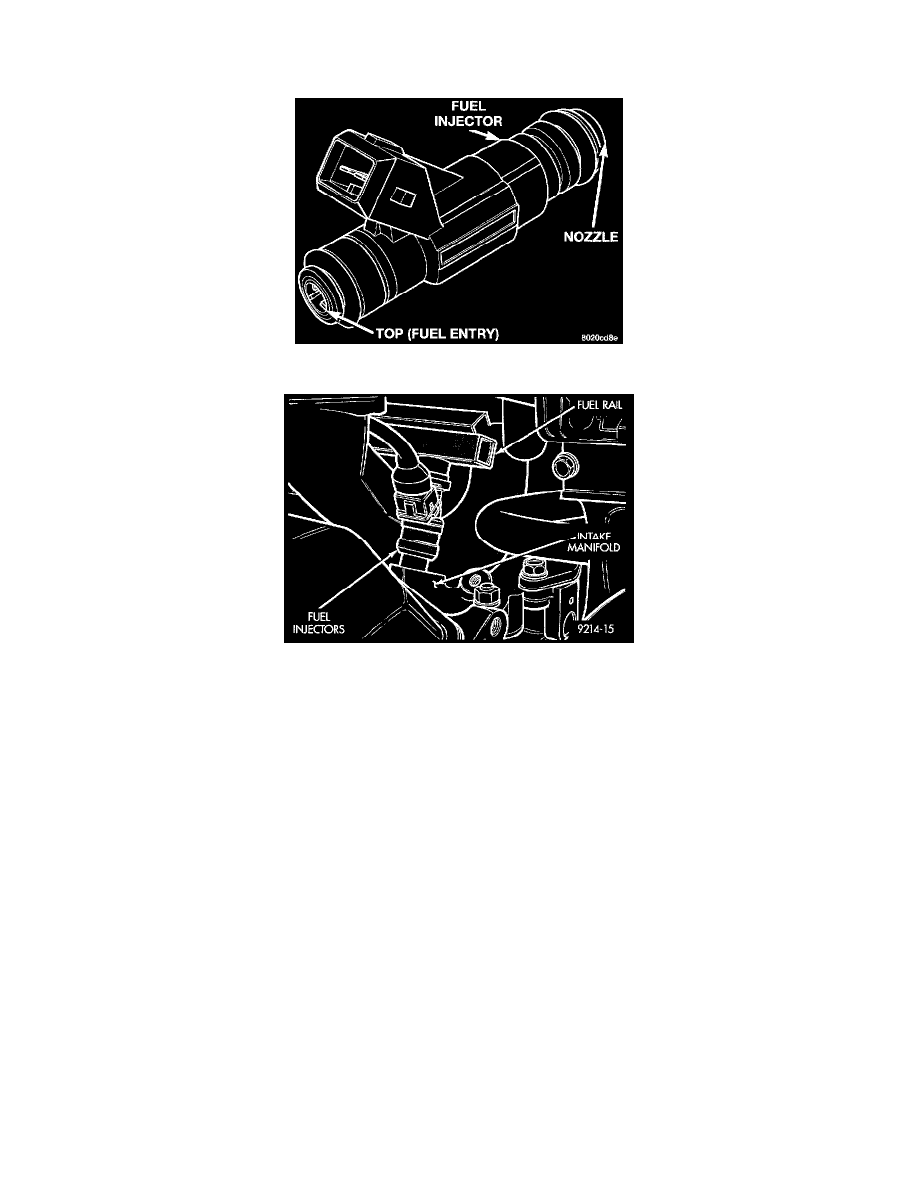Neon L4-2.0L VIN C (1998)

Fuel Injector: Description and Operation
Fuel Injectors Description
Fig. 4 Fuel Injector
Fig. 5 Fuel Injector Location-Typical
OPERATION
The fuel injectors are 12 ohm electrical solenoids (Fig. 4). The injector contains a pintle that closes off an orifice at the nozzle end. When electric
current is supplied to the injector the armature and needle move a short distance against a spring, allowing fuel to flow out the orifice. Because the
fuel is under high pressure, a fine spray is developed in the shape of a hollow cone. The spraying action atomizes the fuel, adding it to the air
entering the combustion chamber.
Fuel injectors are not interchangeable between engines.
The injectors are positioned in the intake manifold with the nozzle ends directly above the intake valve port (Fig. 5).
FUEL INJECTORS-PCM OUTPUT
The 2.0L engine uses electronically operated top feed fuel injectors. The Automatic Shutdown (ASD) relay supplies battery voltage to the fuel
injectors. The PCM controls the ground path for each injector in sequence. By switching the ground paths on and off, the PCM fine-tunes injector
pulse width. Injector pulse width refers to the amount of time an injector operates.
The PCM determines injector synchronization from the camshaft position sensor and crankshaft position sensor inputs. The PCM grounds the
ASD and fuel pump relays after receiving the camshaft position sensor and crankshaft position sensor inputs.
The PCM energizes the injectors in a sequential order during all engine operating conditions except start-up. For the first injector pulse width
during start-up, all injectors are energized at the same time. Once the PCM determines crankshaft position, it begins energizing the injectors in
sequence.
